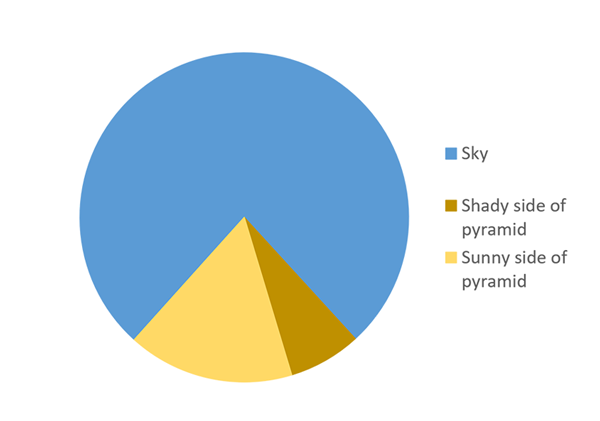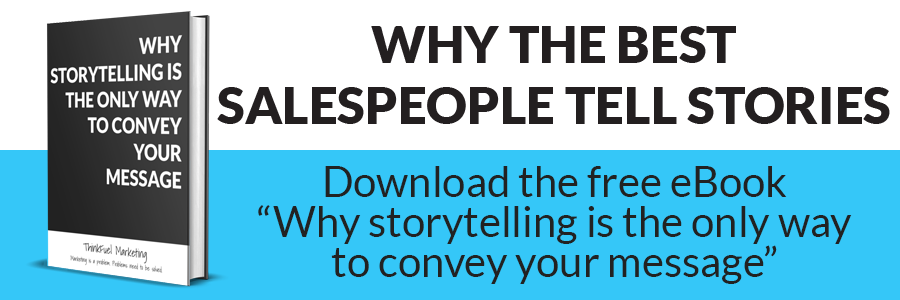Let's start off with an assumption that if you are here, I assume you already understand and appreciate the importance of blogging as part of your digital marketing program. You want to learn how to write great blog posts so you can generate more leads.
With that understanding in mind, I won't bore you with fancy stats such as B2B companies who blog tend to have 55% more traffic to their websites. I won't discuss the harsh truth that no one cares about your product or services pages until the moment he or she needs what you are selling, but they will read and share insightful thought pieces at any time. Instead, we'll jump right into how to write great B2B blog posts that will drive visitors and ultimately leads.
Where to get ideas for blog topics
If you are not a natural writer, one of the toughest hurdles to consistent blogging is coming up with topics to write about. The unusual part of it is we have incredible topics staring us in the face all day long but we overlook them, we think they are common knowledge or not compelling enough to write about. You would be surprised by what your clients and prospects are not familiar with. For instance one of our clients, Hybrid Document Systems, felt the blog "7 Advantages of a Paperless Office" was a waste of time. To them, there was nothing ground-breaking about the article, in their mind, it was common knowledge. However, after being online for two years, it is still one of their most popular pieces and generates a handful of leads every month. My point here, don't dismiss or overlook the obvious.
Another excellent source of ideas, and stay with me here, is to get up from your desk talk with people. The best ideas do not often come from our head; they come from the people who are down in the trenches. Talk to your salespeople about what their clients are asking, or better yet, ask those clients directly. Ask them what they are excited about, what they struggle with, what they wish the knew more about. You will be surprised by the insight you get.
Interview style articles are also a great way to develop blog content. People love this types of blogs because they are more conversational and natural. You could write posts about "A day in the life of..." and pick any role within your office. "A day in the life of a paid media specialist." "A day in the life of our service technician." "A day in the life of our inside sales team." You get the picture. You could also go outside your organization and interview subject matter experts as we did for our blog on storytelling. If you are selling solutions for human resource departments, why not interview one of your clients? They get to be viewed as an expert amongst their peers, and it provides social proof for your readers.
If you are super busy, or super lazy - we don't judge, and want great ideas delivered straight to your inbox then take five minutes and sign up for a Quora account. You tell Quora what you are knowledgeable about and what you are interested in and they send you a regular feed of great questions and topics. Let's say you run a pest control company a quick Quora search gives us three simple, albeit disgusting, questions you could quickly turn into blog posts.

Writing for your human audience
One of the most important things to remember is the content on your blog is very different from the content on your main site. Your main site highlights the features and benefits of your solutions. They are designed to tell your audience why they should change and more importantly, why they should change with you. On the other hand, your blog needs to be educational, informative, and as much as possible, unbiased. It is a tool that lets your audience conduct research into the challenges they are currently facing so they can begin to envision a solution. So remember, we are not selling, we are teaching.
Add natural breaks and visuals to help break up the content. Don't write paragraph after paragraph with no section headers, bullet points, images or videos. Remember people learn and absorb information differently, so including various elements helps you capture the attention of everyone who visits your blog.
In the same vein, charts and graphs are an excellent way to convey complex data combined with a visual element.

No pressure here, but writing a compelling title is critical to the success of your post. It is probably the single most significant factor on whether your blog is read or not. Like I said, "no pressure." I could probably write a whole other blog post on titles alone, but why re-invent the wheel? Our friends over at HubSpot have a terrific article on this topic, and I'd highly recommend you check it out "How to Write Catchy Headlines and Blog Titles Your Readers Can't Resist"
Finally, insert a call to action. Like this one:
Calls to action are what convert visitors into leads you can nurture and prospect. Point to them to some content or a tool that they can use (in exchange for their contact details). Alternatively, if your blog post focuses on readers lower down the funnel, you may want to direct them to a quote or contact us page. The important part is to tailor your CTA to the audience reading the post.
Let's not forget about our robot overlords (Google, Bing, etc.)
First and foremost, and I cannot stress this enough, your blog articles need to be written for your human audience. If you try old-hat tricks to write content just to rank well in Google, you will fail and fail so spectacularly!
With that being said, you still need to follow best SEO practices, so your blog will rank well. Like any page on your site, each article should focus on 1-2 keywords, but with your blog, you want to make sure these are longtail keywords to improve your reach and conversion rate. Remember, don't be put off by longtail keywords because they have lower search volume than their than generic counterparts. Targetting longtail keywords bring visitors to your site who are focused on your solutions, and relevant traffic means a higher conversion rate.
Passed that, just focus on the usual SEO elements such as:
- Meta titles
- Meta descriptions
- <h1> tags
- Image alt text
- Internal links
- External links
- Semantically related keywords
- Flesch-Kincaid readability score of 50
The wrap-up
The answer to "How to write a great blog?" isn't rock science. There's no magic involved. It is about opening your eyes to the ideas right in front of you, writing informative content that people can easily read and share and that follows best practices for search engine optimization (SEO).
Table of contents
Share this
You May Also Like
These Related Stories

How Long Should Blog Posts Be in 2020?

Why Isn't My Blog Generating Any Leads?


